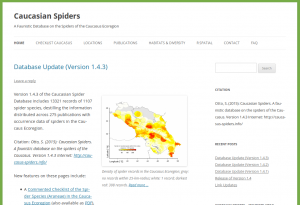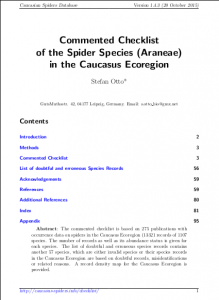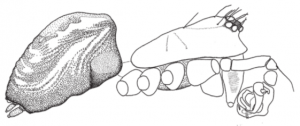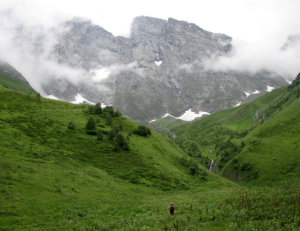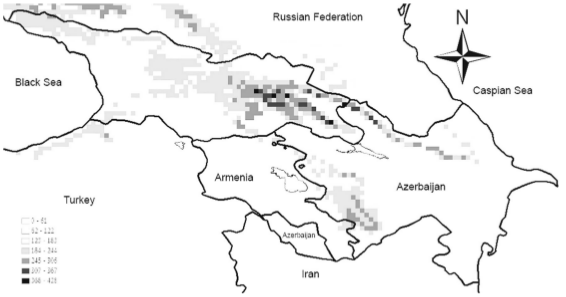Otto & Japoshvili (2018): The spiders (Arachnida: Araneae) of the Lagodekhi Reserve, Georgia: faunistic results of a transect study and an updated checklist
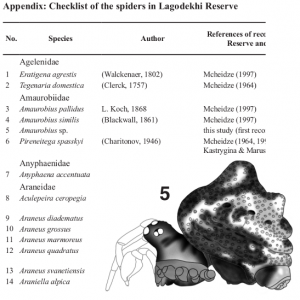 Abstract: In the largest systematic spider collection effort in a single location in the Caucasus Ecoregion, across several altitudinal zones and throughout the entire vegetation period of one year, 426 juvenile and 359 adult spiders belonging to 69 species from 48 genera and 19 families were collected in the Lagodekhi Reserve (Georgia) in 2014, using Malaise traps on a transect with seven study plots between 666 and 2559 m in the montane, subalpine and alpine vegetation zones. Phoroncidia pilula (Karsch, 1879) is recorded in the Western Palaearctic for the first time. Thirty-eight species are recorded in the Lagodekhi Reserve for the first time, raising the number of spider species of this reserve to 202 species, five additions are first records for the Caucasus Ecoregion and ten species are first records for Georgia. Diagnostic drawings and analyses are provided for 13 species, e.g. Megalepthyphantes pseudocollinus Saaristo, 1997, Phoroncidia paradoxa (Lucas, 1846), P. pilula (Karsch, 1879) and Trochosa cachetiensis Mcheidze, 1997. An updated checklist of the spiders in the Lagodekhi Reserve is provided.
Abstract: In the largest systematic spider collection effort in a single location in the Caucasus Ecoregion, across several altitudinal zones and throughout the entire vegetation period of one year, 426 juvenile and 359 adult spiders belonging to 69 species from 48 genera and 19 families were collected in the Lagodekhi Reserve (Georgia) in 2014, using Malaise traps on a transect with seven study plots between 666 and 2559 m in the montane, subalpine and alpine vegetation zones. Phoroncidia pilula (Karsch, 1879) is recorded in the Western Palaearctic for the first time. Thirty-eight species are recorded in the Lagodekhi Reserve for the first time, raising the number of spider species of this reserve to 202 species, five additions are first records for the Caucasus Ecoregion and ten species are first records for Georgia. Diagnostic drawings and analyses are provided for 13 species, e.g. Megalepthyphantes pseudocollinus Saaristo, 1997, Phoroncidia paradoxa (Lucas, 1846), P. pilula (Karsch, 1879) and Trochosa cachetiensis Mcheidze, 1997. An updated checklist of the spiders in the Lagodekhi Reserve is provided.
Otto, S. & Japoshvili, G. (2018): The spiders (Arachnida: Araneae) of the Lagodekhi Reserve, Georgia: faunistic results of a transect study and an updated checklist. Arachnology 17(8) 375-391. [PDF link]
[soon to be updated: -> link to this publication’s page on https://caucasus-spiders.info/]
